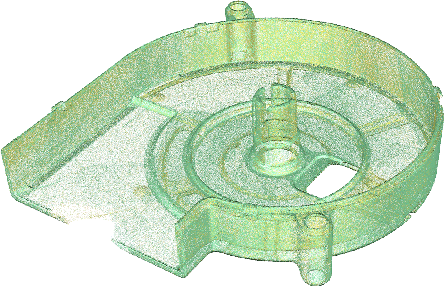Prototyping is a critical step in manufacturing, and accurate prototypes are required to prove out concept designs, validate research, and to help with visualization. To properly develop their innovations, manufacturers need to model and accurately represent the prototype’s shape in their electronic models. 3D scanners are particularly effective at capturing the complex shapes of physical prototypes and converting that data into an electronic representation in CAD or other CAE systems.

Unlike traditional methods (like calipers or coordinate measuring machines) that rely on the capture of a few pre-programmed points, non-contact 3D scanners capture millions of data points to represent the true geometry of an existing component.
The 3D scanner captures a dense “point cloud” that represents the complete surface area of the part. After processing this point cloud further using specialized 3D scan data software, it can be sent directly to CAD for further modeling or analysis.
Generating a complete 3D model of the part or object, 3D scanning also allows you to:
- Update CAD models of your prototype as it evolves
- Reverse engineer a hand-developed prototype into a CAD model
As a mature technology (at ShapeGrabber, we’ve been pioneering industrial 3D scanners since 1993), 3D scanning is popular for prototyping projects because:
- It’s fast. Lasers can capture millions of data points in minutes. The complete surface geometry of an entire part can be captured quickly to close the design loop and accurately render your prototype in electronic designs.
- It handles complex shapes. Curves and multiple features aren’t a problem for 3D scanners. They easily scan the complex surface dimensions of parts and tools that would otherwise be too time-consuming, costly or simply impossible to measure.
- It’s easy. You don’t need to write a computer program before scanning a part.
